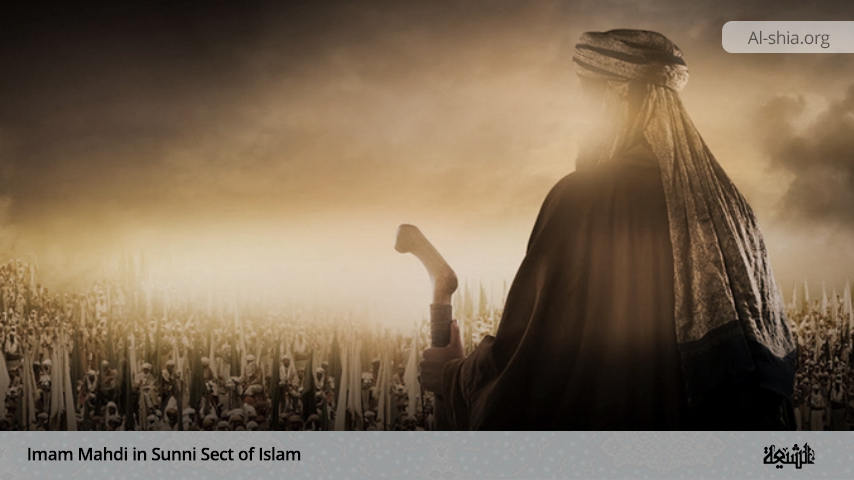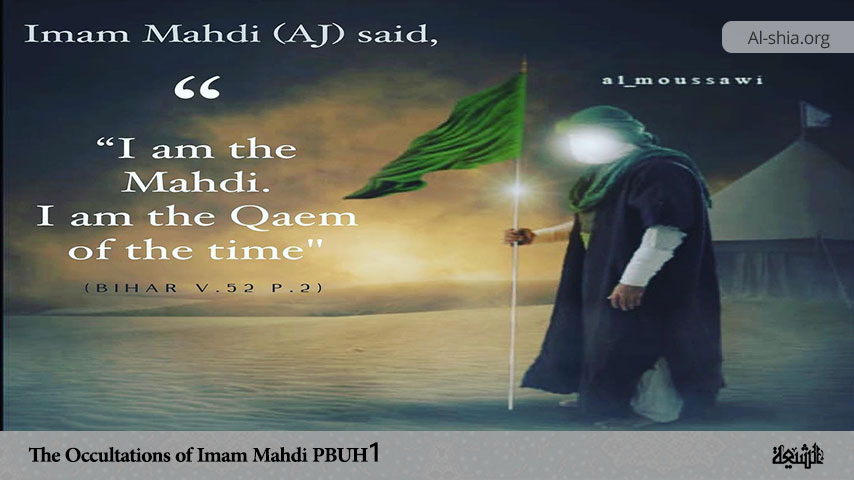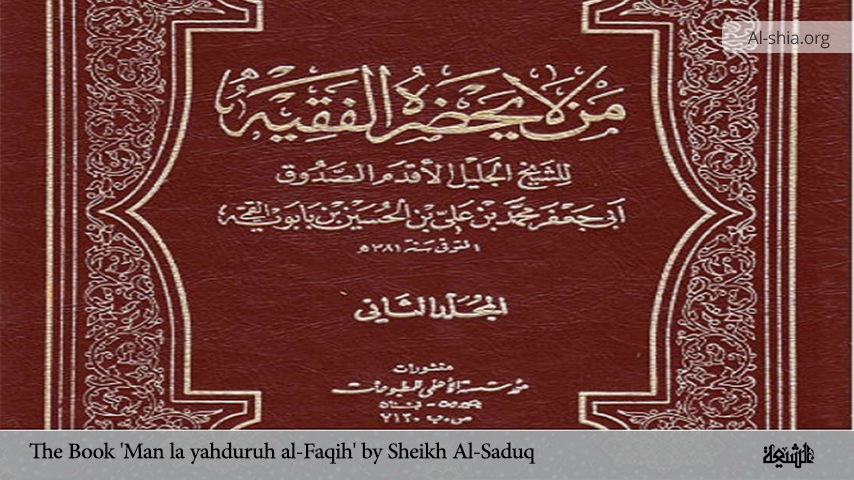Al-Mahdi, “The Guided One”, is the name given to the restorer of religion and justice who, according to a widely held Muslim belief, will rule before the end of the world. The term Mahdi as such does not occur in the Qur’an, but it is derived from the Arabic root h-d-y commonly used in the Qur’an with the meaning of divine guidance. (1)
During the Second Civil War after the death of the holy Prophet (s.a.w.a), the term first came to be used after the death of Mu’awiya for an expected ruler who could restore Islam to its original perfection.
Among religious scholars, discussions about the Mahdi and his identity can be traced back to that time. These discussions developed in different directions and influenced later beliefs about the Mahdi to varying degrees. (2)
There are a number of differences between the two major sects of Islam as to the conception of the creed in the final restorer. According to the Shorter Encyclopedia of Islam, the status of the Mahdi awaited by the Sunnites is different from that of the twelfth Imam awaited by the Shi’ites.
The essence of Sunni Islam is that the Muslims will accede to self-rule, attaining a state of truth and certitude through their own exertions. The idea of an absolute Mahdi as an infallible guide is therefore rejected by Sunni theologians. (3)
The Sunnites, in fact, expect the Mahdi to be the ultimate Caliph of the Prophet (4) and to spread justice throughout the Earth. They do not believe in the future restorer as one of the fundamental principles of faith, as the Shi’ites believe.
Furthermore, a minority among the Sunnites do not accept that the Restorer will be called Mahdi and, indeed, entertain doubts as to his existence.
The Encyclopaedia of Islam asserts that: “Lingering doubts concerning the Mahdi may partly account for the absence of any traditions about him in the Sahihs of al-Bukhari (810/870 AH) and Muslim (817/875 AH).”(5) “There is no mention of the Mahdi in either of the two Sahih’s of Muslim or Bukhari”.(6)
There are also controversial discussions about whether the idea of Messianism rightly belongs to Islam or not. Some claim that the idea of Messianism is not Islamic. The New Encyclopaedia Britannica says that “Islam is not a Messianic religion and has no room for a Saviour-Messiah.”(7)
Riffat Hasan supports this thesis and states that: “Messianism appears to be incompatible with the teachings of the Qur’an, nonetheless in the Muslim world it is a widespread phenomenon, playing a pivotal role in the lives of many present-day Muslims from all segments of society.”(8)
Also: “Normative Islam as embodied in the Qur’an does not support the idea of Messianism in any of its forms, while Messianism is an essential part of religious belief and practice for almost all Shi’a Muslims. Shi’a Messianism does not fit theologically or logically into the framework of normative Islam.”(9)
Riffat Hasan also relies on Fazlur Rahman’s comments showing that Messianism was not a part of original Islam. He stated: “As for Messianism, it was originally adopted in Islam either by Shi’ism or Sufism, but in any case, it came to Sunni Islam through the Sufis or rather through the precursors of the Sufis – the public preachers of the 2nd/8th century who consoled and satisfied the politically disillusioned and morally starved masses by holding out Messianic hopes.”(10)
These discussions are ongoing even though the belief in the Mahdi is essentially Islamic and is widely accepted among scholars and ordinary Muslims. Even though it is not an essential part of the Sunni creed, it is accorded widespread belief among this community.
Indeed, early Sunni sources record several traditions from the Prophet about the appearance and attributes of the Mahdi. These traditions are designated as Mutawatir, meaning that they have been reported from the Prophet successively by so many different unbroken chains of transmission and such a number of narrators in every generation that it would be virtually impossible to fabricate their existence without such fabrication becoming known. (11)
The verses of the Qur’an concerning the Mahdi have also been interpreted by numerous traditions through Sunni chains of transmission, as will be seen in the third chapter. There are many other important terms and practices widely accepted by the Sunnis but that are not explicitly mentioned in the Qur’an.
The authenticity or otherwise of the traditions of classical and post-classical collections of hadith are open to discussion as regards all fields of Islamic thought, not only on the subject of the Mahdi.
Moreover, despite the absence of the term “Mahdi”, both the Qur’an and the prophetic traditions (hadith) in the two Sahihs provide strong grounds for expecting the appearance of someone who, both through thought and deed, will represent the long-awaited spiritual “guide”.
Indeed, in different hadiths, the two Sahihs allude to the coming of a personage at the End of Time, someone whom Jesus will accompany.
For example, let us cite two hadiths: The Sahih of Bukhari mentions a tradition reported by Abu Hurayra: “The Prophet said:
‘How will you react when the son of Mary (Jesus) descends among you while your Imam will be from among yourselves?’”(12)
The Sahih of Muslim reports a tradition from Jabir b. ‘Abdullah:
“I heard the Prophet saying: ‘A group of Pure ones from my Community will fight continuously for the Truth (Haqq) until the Day of Judgement.’ He said: ‘Then will descend ‘Isa ibn Maryam. And your Leader (Amir) will tell him: Come and lead the prayer for us. He will answer: No, for some of you are leaders of others, that is what God has granted to this Community.’”(13)
In the rest of the authoritative collections of traditions, the Mahdi and all that concerns his advent is explicitly mentioned in traditions from the Prophet, which allows us to think that the idea is not exclusively Shi’ite.
Several compilers of hadith like Ahmad ibn Hanbal (d.241 AH/857 AD), Ibn Madja (d.273 AH/887 AD), al-Tirmidhi (d.279 AH/892 AD), Abu Dawud al-Sajistani (d. 275 AH/889 AD), Ahmad al-Bazzar (d.292 AH/904 AD),
Abu Ya’lah al-Mawsili (d.307 AH/919 AD), al-Tabarani (d.360 AH/971 AD), al-Hakim al-Naysaburi (d.431 AH/1040 AD), and al-Bayhaki (d.1077 AD) have specifically recorded traditions about the Mahdi in their collections.
According to the Encyclopaedia of Islam, the Mahdi traditions contained in the canonical Sunni hadith collections of Abu Dawud, al-Tirmidhi, Ibn Madja and al-Nassa’i as well as the Musnad of Ibn Hanbal,
were numerous enough to provide a solid basis for the popular belief in the Mahdi as well as in the post-classical collections of hadith like those of al-Tabarani, al-Hakim al-Naysaburi, and al-Bayhaki.
The eschatological role of the Mahdi became generally more pronounced, but it never became an essential part of Sunni religious doctrine and the Sunni creed rarely mentions it. The view that the Mahdi would rule the Muslim community at the time of the descent of Jesus was commonly accepted. (14)
Ibn Khaldun (d. 405 AD), who refutes the certainty of the majority of the hadith concerning the Mahdi, nevertheless accepts a minority of them. (15)
In his Muqaddimah, he has summarized the Sunnite position on the question of the future restorer of the faith in the following terms:
“It has been well known (and generally accepted) by all Muslims in every epoch, that at the end of time a man from the family (of the Prophet) will without fail make his appearance, one who will strengthen Islam and make justice triumph. The Muslims will follow him, and he will gain domination over the Muslim realm. He will be called the Mahdi.
Following him, the Antichrist will appear, together with all the subsequent signs of the Hour (the Day of Judgement), as established in (the sound traditions of the Sahih)” [authoritative collections of the prophetic sayings recognized by the Sunnites.] After the Mahdi, ‘Isa (Jesus) will descend and kill the Antichrist. Or, Jesus will descend together with the Mahdi and help him kill (the Antichrist), and have him as the leader in his prayers.”(16)
In spite of support for the belief in the Mahdi by some prominent traditionists, opposition to the belief in him did not entirely disappear among the hadith scholars. (17)
In the early period of Islamic history, a minor group of Muslim scholars denied the appearance of the Mahdi and claimed that only Jesus would come.
Ibn Madja reports this hadith (“la Mahdi illa ‘Isa; there shall be no Mahdi except Jesus”) in his Sunan and says that it was reported by one person only, and that is Idris Shafi’i. (18)
Furthermore, Qurtubi states that there are unknown transmitters in the chain of the narration of this hadith and that it is therefore weak.
He also states that this hadith contradicts all the hadiths reported by the Prophet about the Mahdi, descended from the Prophet’s family through Fatima. (19)
On the other hand, in the middle of the 7th/13th century, several Sunnite scholars supported the Shi’ite belief that the twelfth Imam was the expected Mahdi, relying solely on Sunnite traditions and countering Sunnite objections to the Mahdi-ship of the twelfth Imam.
Among them, Sibt ibn al-Jawzi, shortly before his death in 654 AH/1256 AD in Damascus, assembled reports from Sunni sources about the virtues of ‘Ali and his descendants, and in the end, he affirmed that the Twelfth Imam was the expected Mahdi in his Tadhkira khawas al-‘umma bi- dhikr khasa’is al-a’imma.
Support of the Mahdi-ship of the Twelfth Imam by these Sunni authors, as also by later ones, was regularly noted by Imami apologists. (20)
Regardless of the authenticity or otherwise of the traditions cited on this question, the ultimate triumph of good over evil in the Qur’an and the universal idea of hope in Islam is embodied in the figure of the Mahdi. The belief in a future Saviour and the Messianic concept has had a significant social and psychological impact on Muslims. In every crisis and in times of turbulence, these beliefs served to raise their hopes.
NOTES:
_____________________________
- W. Madelung: “al-Mahdi” in EI², p.1230
- Ibid, p.1231
- “al-Mahdi” SEI, p.311
- Sachedina, Islamic Messianism, P.14
- “al-Mahdi“,EI², p.1234
- “al-Mahdi” SEI, p.311
- “Messiah and Messianic Movements”p.1020
- R. Hasan: “Messianism and Islam”, p.262
- Ibid, p.267.
- Fazlur Rahman , Islam , p.245
- Concerning the Mahdi, Hafez Abu Abdullah Ganzi Shafei (d. 658 A.H.) reports in his book al-Bayan: تواترت الأخبار و استفاضت بكثره رواتها عن المصطفى فى أمر المهدى (M.R. Hakimi, Khorshid-e Maghreb, p. 81).
- M. ibn Isma’il al-Bukhari, Sahih Bukhari, Bab. Nuzul ’Isa ibn Maryam 49, Vol. 4, p.143: … عن أبي هريره قال: قال رسول الله (ص), كيف أنتم إذا نزل ابن مريم فيكم و إمامكم منكم؟
- Muslim ibn Hajjaj, Sahih Muslim, Kitab Al-Iman, num. 247, Vol. 1, p. 137: … عن جابر بن عبدالله يقول. سمعت النبى (ص) يقول: لاتزال طائفه من أمتى يقاتلون على الحق ظاهرين إلى يوم القيامه. قال فينزل عيسى ابن مريم (ع) فيقول أميرهم: تعال صل بنا. فيقول: لا, إن بعضكم على بعض أمراء تكرمة الله هذه الأمة.
- “Al-Mahdi” in EI², p.1234.
- A. Amin, al-Mahdi wal-Mahdawiyah, p.108.
- Ibn Khaldun, The Muqaddimah, vol. 2, p.156.
- “Al-Mahdi”, EI², p.1234
- Ibn Madja, Muhammad Ibn Yazid al-Qazwini (207-275 A.H.) Sunan Ibn Madja, Kitab al-Fitan, Bab Shiddat al-Zaman, Vol. 3, p. 434.
- Al-Qurtubi, Al-Tadhkirah Fi Ahwal al-Mawta wa umur al-Akhira , Bab Fi al-Mahdi.
- “Al-Mahdi”,EI², p.1237

















